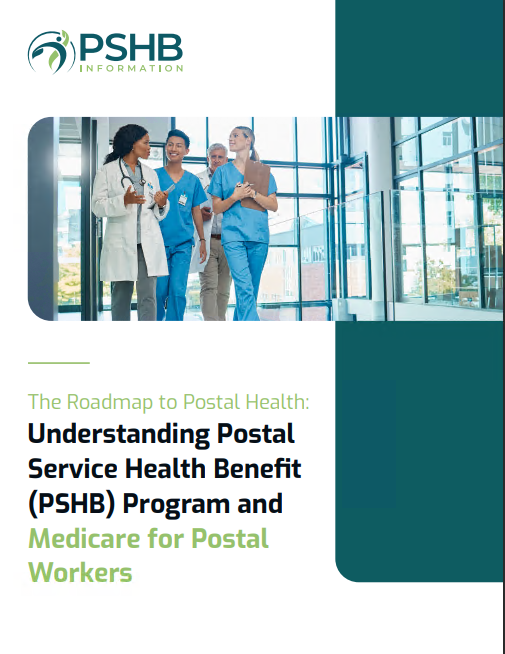Key Takeaways:
-
Understanding the 2025 Open Season for PSHB is essential to making informed health plan choices for you and your family.
-
Deadlines and Medicare integration rules are crucial factors for ensuring uninterrupted coverage.
A New Era for USPS Workers: What Open Season Means for You
The 2025 Open Season marks a significant transition for USPS employees and annuitants as they navigate the Postal Service Health Benefits (PSHB) Program. This year is particularly vital due to the new options and requirements introduced with the PSHB system. Whether you’re a seasoned federal worker or new to the system, knowing what’s ahead can save you headaches and ensure your health coverage aligns with your needs.
You might feel overwhelmed with all the changes, but having the right information on hand makes the process more manageable. Let’s dive into what you need to know about this year’s Open Season, ensuring you’re ready to make confident decisions about your health benefits.
What Is Open Season?
Open Season is your annual opportunity to evaluate, enroll in, or change your health benefits. For 2025, it’s the period from November 11 to December 9, 2024. Missing these dates means you’ll have to wait for the next Open Season unless you experience a Qualifying Life Event (QLE). With the shift to PSHB, this year’s enrollment carries additional importance for all Postal Service employees and annuitants.
Why This Year Is Different
The move from the Federal Employees Health Benefits (FEHB) system to PSHB is more than a simple administrative change. USPS workers now have access to tailored health plans. This transition introduces new options designed to meet the unique needs of Postal Service employees and their families. However, it also comes with specific requirements, such as mandatory Medicare Part B enrollment for certain groups. Understanding these distinctions can make or break your experience during this enrollment period.
The plans available through PSHB are specifically designed for postal employees, offering coverage options that integrate closely with Medicare and other federal health programs. Missing out on the opportunity to enroll or make changes could leave you stuck with a plan that doesn’t meet your needs for the coming year.
Who Needs to Take Action?
Active USPS Employees
If you’re an active employee, Open Season is your chance to:
-
Compare available PSHB plans and choose the one that best suits your needs.
-
Make changes to your current enrollment. Whether you’re considering adding dependents or upgrading your coverage, Open Season ensures that your plan is up-to-date and reflective of your current situation.
Annuitants and Retirees
For retirees, staying informed is critical. Annuitants already enrolled in FEHB will be automatically transitioned to a comparable PSHB plan unless they make changes during Open Season. However, you don’t have to accept the default option. Use this time to explore the updated benefits and costs under PSHB plans.
Medicare-Eligible Participants
If you’re 65 or older, understanding Medicare integration is essential. PSHB requires Medicare Part B enrollment for certain retirees and eligible family members unless exempt. Failing to enroll could lead to higher costs or reduced coverage options. Don’t let confusion over these rules disrupt your health coverage—take the time to get it right.
Key Deadlines You Can’t Afford to Miss
Open Season Dates
Mark your calendar for November 11 to December 9, 2024. These four weeks are your only window to:
-
Enroll in a PSHB plan.
-
Switch plans if your current coverage no longer fits your needs.
Medicare Enrollment Coordination
If you’re eligible for Medicare and haven’t yet enrolled in Part B, make sure to do so during your Initial Enrollment Period (IEP) or the General Enrollment Period (GEP). Missing these deadlines could impact your PSHB coverage. Remember, timing is critical here. Late enrollment penalties or gaps in coverage can be costly and difficult to resolve.
Simplifying Medicare Integration
One of the biggest changes with PSHB is its close alignment with Medicare. Here’s what you need to know:
Who Needs Medicare Part B?
If you’re retired and Medicare-eligible, PSHB requires you and your family members to enroll in Part B unless:
-
You retired on or before January 1, 2025.
-
You’re actively employed and turning 64 after January 1, 2025.
Benefits of Coordination
Combining PSHB with Medicare Part B can lower out-of-pocket costs. Some plans even waive deductibles or reimburse a portion of Part B premiums, making integration a cost-effective option. This coordination also simplifies the process of accessing services, ensuring that you’re not left guessing about what’s covered and what’s not.
Beyond financial savings, aligning your PSHB plan with Medicare provides a more comprehensive safety net for your health needs. If you’re eligible, be sure to review plans that highlight these benefits to maximize your coverage.
Choosing the Right PSHB Plan
What’s Available?
PSHB offers a range of plans tailored to USPS workers, including those with supplemental benefits like dental and vision. While the total number of plans may have decreased, the variety ensures there’s something for everyone. These plans are structured to meet the diverse needs of postal workers, from entry-level employees to retirees managing long-term health concerns.
Factors to Consider
When selecting your plan, consider:
-
Monthly Premiums: Balance affordability with coverage. Higher premiums might offer more comprehensive benefits, so weigh your options carefully.
-
Coverage Needs: Review benefits for yourself and your dependents. If you’re managing chronic health conditions or anticipating changes in your family’s needs, prioritize plans that accommodate these factors.
-
Provider Networks: Ensure your preferred doctors and hospitals are included. Check for limitations to avoid surprises when you need care.
-
Medicare Coordination: Look for plans with Medicare-friendly benefits if applicable. If you’re already Medicare-eligible, explore options that maximize your combined benefits.
Making the Most of Open Season Tools
Navigating PSHB can feel overwhelming, but you don’t have to do it alone. Use these tools to simplify your decisions:
Plan Comparison Tools
Online comparison tools allow you to:
-
View plan options side by side.
-
Compare costs, deductibles, and coverage details. These tools can help you narrow down options based on specific criteria, such as premium cost or specialized coverage areas.
Personalized Support
Don’t hesitate to reach out to HR or benefits counselors. They can provide tailored advice to help you choose the best plan. Many USPS offices offer informational sessions or one-on-one consultations during Open Season to assist you.
Review the Annual Notice of Change (ANOC)
This document outlines changes to premiums, deductibles, and benefits for the coming year. Make sure to read it carefully to avoid surprises. Ignoring these updates could mean overlooking significant changes that affect your coverage or costs.
Cost Implications You Should Know
General Costs for 2025
-
Part A (Hospital Insurance): Premium-free if you’ve worked 10+ years; otherwise, premiums range from $284 to $518/month. The hospital deductible is $1,676 per benefit period.
-
Part B (Medical Insurance): Standard premium is $185/month with an annual deductible of $257.
-
Part D (Prescription Drug Coverage): Maximum deductible is $590, with a $2,000 annual out-of-pocket cap.
IRMAA Adjustments
Higher-income earners will face increased Medicare premiums under the Income-Related Monthly Adjustment Amount (IRMAA). Thresholds for 2025 start at $106,000 for individuals and $212,000 for couples. If you fall into this category, plan accordingly to budget for higher premium costs.
What Happens If You Don’t Take Action?
Failing to enroll or review your options during Open Season could result in:
-
Being automatically enrolled in a plan that might not suit your needs.
-
Missing out on potential cost savings from Medicare integration.
-
Increased out-of-pocket expenses if your plan’s coverage changes.
The repercussions of inaction could ripple well beyond 2025, making it vital to be proactive during this window.
Tips for a Smooth Open Season
-
Start Early: Begin reviewing plans as soon as Open Season starts to avoid last-minute stress.
-
Double-Check Deadlines: Set reminders to ensure you complete your enrollment on time.
-
Involve Your Family: Discuss coverage needs with your dependents to select the best plan for everyone. Their input can reveal aspects of coverage you might overlook.
-
Stay Informed: Subscribe to USPS updates or attend informational webinars. Staying connected to reliable sources ensures you’re aware of changes and deadlines as they happen.
Staying Prepared Beyond 2025
Health benefits are a long-term commitment, so think beyond just this year’s Open Season. Regularly reviewing your coverage ensures you’re always getting the best value. Pay attention to:
-
Changes in your health or family’s needs.
-
Updates to PSHB plans.
-
Evolving Medicare policies.
Making Health Coverage Work for You
Navigating the 2025 Open Season doesn’t have to be a daunting task. By staying informed, comparing options, and meeting deadlines, you can secure the coverage that best fits your needs. Take advantage of available tools and resources to make the process as seamless as possible. Your health is worth the effort.









